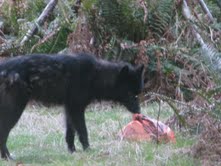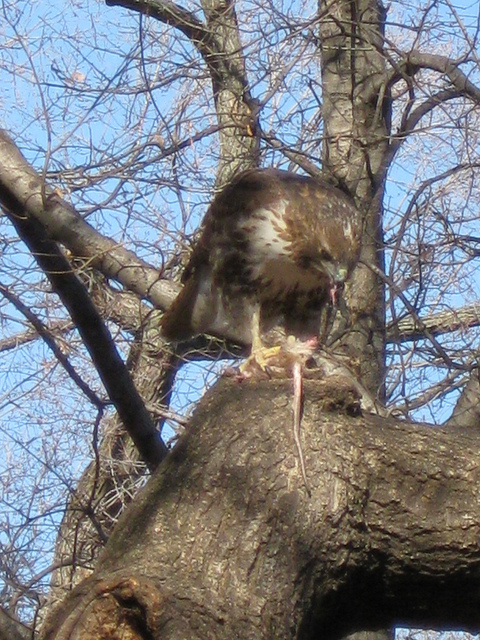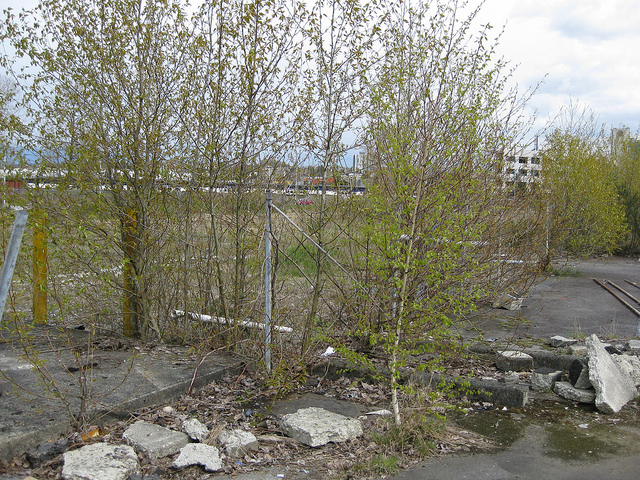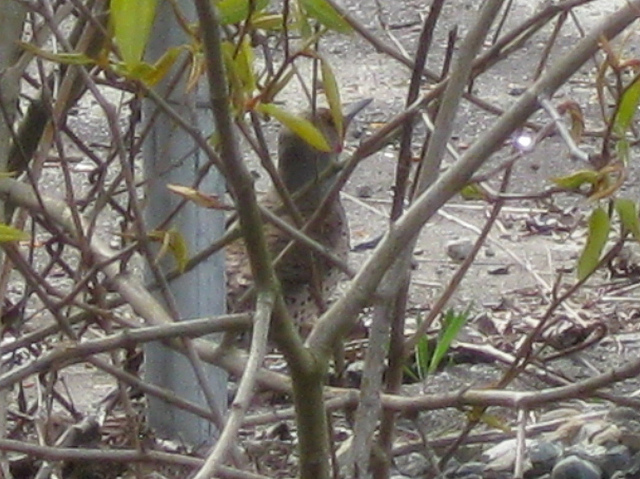Another spring is upon us here on Canada’s West Coast, replete with its promise of respite from the brooding winter sky and the months of cold, slimy rain. The occasional few hours of sunshine, the unfurling of tender buds and in the hollows – the din of tree frogs in their tremulous nuptial chirping; it all reminds me that this is the season of new life and new beginnings.
Though Timothy Morton describes the current ecological moment as a kind of planetary ‘charnel ground’, i.e. we have basically already died and just haven’t realized it yet, I am perhaps stubbornly holding out for some hope. Despite the epic damage our species has wrought on its fellow organisms and on the very climatological systems that keep everything in its finely tuned balance, I am seeing signs here and there that the processes of planetary repair are kicking in, and that one day, the worst of what we have done will be obscured beneath layers of unquenchable biomass.
Which is not to say I am in denial about the severity of our present situation. Accelerated extinction and human-induced climate change are all too real and many of earth’s more fragile ecosystems have been badly diminished or at reduced to ‘museum’ status, surviving as relics only within the confines of national parks, constantly under threat from illegal logging, poaching and the abrasions of excessive tourism. Though I think it premature to declare the ‘end of nature,’ it is safe to say we are at the end of wilderness.
But what does this mean exactly? To be sure the figure/ground relationship between man and nature has changed fundamentally, perhaps irrevocably, as Bill McKibben pointed out in his prescient book, way back in 1989. A single species, ours, is now the greatest driving force behind species biodiversity, climate change and even geomorphology, via the amount of the earth’s crust we move and the structures we build, activities that geologists calculate now use up more energy annually than is expended by the natural growth of mountains and the deposition of sediments. Yet there are also signs that species are responding to us by evolving at an unprecedented rate. The New Scientist describes a type of ‘fast-track’ evolution, in which significant morphological traits of animals can evolve in mere decades to help them adapt to changing environmental conditions, provided there is enough genetic diversity in the original population to allow the expression of ‘back-up’ genes. Several of Darwin’s iconic Galapagos finches are already changing their beak sizes as they literally evolve into new species as the conditions of their Galapagos habitat are altered by changing climate and by the selective pressure of being fed leftover rice by the throngs of eco-tourists who have come to see them. The article also cites the now classic case of ‘industrial melanization’ in peppered moths, which rapidly evolved darker pigmentation in response to the contamination of the English Midlands by coal soot during the Industrial Revolution. Blackness too confers a survival advantage to organisms, especially birds, living in the ‘zone of alienation’ around the Chernobyl reactor site. It turns out that darker pigmentation frees up a molecule called glutathione (GSH), an antioxidant which protects tissues from radiation damage. So darker birds succeed, while their lighter cousins don’t, which has already skewed the way birds in the area look in the past twenty-five years since the explosion. Amazingly, a conspicuously black, radiotrophic fungus now thrives in one of the most radioactive places in the whole disaster area – the inside surfaces of the concrete sarcophagus that was hastily constructed to contain the radiation spewing from the stricken reactor as they continued to melt down.
As well as appearance, animal behavior is rapidly changing as the evolutionary pressure to adapt to the ubiquitous humans presence steadily mounts. These ‘cultural’ shifts are cropping up all over the place as in the case I wrote about previously concerning the extirpation and subsequent recolonization of wolves on Cortes Island, BC (where I live part time.) What is amazing about this situation was not that the wolves came back; they weren’t after all extinct on the nearby mainland; but that they adapted their behavior in response to the denser human settlement they encountered on their return. They now unabashedly lope through populated areas even during daylight hours to feast on a bounty of domestic animals, yard-fattened deer and household trash. Though normally a shy, secretive species, wolves on Cortes are now pushing the envelope in their interactions with the people, maintaining very little distance between themselves and us, their primary predator, and acting nonchalant. I’ve encountered them several times now and I have to say it is quite something to be given the once-over by one of these iconic predators, as is saunters nonchalantly down the same dirt road I frequent on my morning jog. The wolves’ adaptive strategy is clearly working on Cortes as the numbers of wolves remain more or less stable, despite occasional shootings by locals and Provincial Conservation officers, who get called in to cull overly habituated ‘problem’ animals. On the whole, the benefits of associating with humans must outweigh the risks them. The population of their main prey items, raccoons and black-tailed deer, explode in the disturbed, edge habitats humans create such as residential gardens and former clear-cuts that come up in lush alder groves after the conifers get logged out. Though not nearly as successful in our presence as their smaller cousin, the coyote, it’s only natural, I suppose, that some wolves; which are after all a highly intelligent species; have learned to live in our midst. Yet it is an open question as to whether this has a genetic basis. They sure are acting differently though. During the past week, I have heard two reliable reports of wolves, individually and in packs, chasing cars along the roads of Cortes. Clearly their behavior hasn’t stopped evolving yet.
A similar situation has arisen in upstate New York, where fishers, previously trapped out from much of their North American range due to the demand for their valuable furs, are returning in droves – not to the remote wildernesses we thought they preferred, and where they continue to decline, but to the fragmented suburban forests and the margins of golf courses of cities like Albany. Like the Cortes Island wolves, these over-sized weasels are learning to exploit the rich food resources available in the interstices of human settlement, hunting down house cats and dodging highway traffic, in marked contrast to their secretive wilderness cousins who abandon habitats frequented by people. These are decidedly cultural shifts from a species we thought categorically could not co-exist with us. Something has definitely shifted within this eastern population of fishers. Human induced hyper-evolution seems a likely explanation.
Perhaps most lovely of all is the oft-blogged spectacle of the thousands of Vaux’s swifts that have colonized the disused smoke stack of a school in Portland Oregon. Swifts, small, swallow-like birds, traditionally need the large hollow trees, once characteristic of the region’s now largely extirpated old-growth forests, in which to communally nest and roost. Yet the Portland population has somehow transposed this crucial requirement onto what seems a very different set of circumstances.
It makes me wonder how many other species are rapidly adapting to our built environment to use as their primary habitat, in the face of the massive evolutionary pressure to do so. Hawks certainly seem to be making this adjustment. During my last few winters in New York City, I was delighted to observe red-tailed hawks roosting in the stately American Elms of Tompkins Square Park, disemboweling the rats they’d snatched right in front of squealing crowds of spectators. These magnificent birds have spawned a new class of paparazzi, who blog their behavior in minute detail and lobby for their protection. A similar situation arose after a group of fellow squatters and I started Cottonwood Gardens in Vancouver. For a short while we were plagued by rats, attracted by the sudden availability of compost piles and the produce we were trying to cultivate. Just as we were about to despair, a pair of red-tailed hawks established a nest on a nearby cottonwood tree and they soon made short work of the rodents. They resided there every nesting season for several years until they were themselves supplanted by a pair of bald eagles who increased the size of the already enormous nest. Twenty years later there are now two bald eagle nests at the Cottonwood Gardens site, in close proximity to each other and one can regularly thrill to the site these apex predators soaring over the factories, warehouses and trash-littered terraine vague of what at first glance seems a most unprepossessing habitat from a wildlife point of view.
A recent report in the Guardian described a heavily contaminated refinery site, near Rochester in the UK, as a ‘Lost World,’ of critically endangered insects, which have been all but wiped out in so called ‘natural areas’ elsewhere. There is something about this ruin ecology’s unique interplay of disturbance and neglect that makes it an ideal habitat for these rare creatures. Yet perhaps it is the creatures themselves that have also changed, slowly adapting to live among us in the wastelands and ruins we have worked so hard to create. Our abandoned industrial sites and DMZs have become ‘disaster edens’ – a new frontier in ecological study. My first inkling of this happened during a visit to Berlin in the early 1980’s. I was astonished to observe a thriving diversity of wildlife in the land mine studded strip of no-man’s land between the two sections of the Berlin Wall. Clearly visible were scores of European hares grazing freely on a verdant meadow, too light to trip the lethal devices hidden mere centimeters beneath their twitching noses. They did not however escape the notice of the squadrons of kites, falcons and honey buzzards who regularly patrolled the air above them to pick off any stragglers. Though the Wall has long since been down, Berlin has lately been overrun with native wild boars who swarm in from the countryside to avail themselves of the city’s leafy boulevards, parks and gardens. Their population has grown so precipitously that urban hunters have been contracted to keep the numbers down.
In cities we get a preview of the larger trend toward ragamuffin ecologies or what has been called ‘Nature 2.0.’ Here native and exotic organisms co-mingle in hitherto unheard of combinations resulting in meta-ecologies that are adaptive and emergent. These are ecologies of disturbance, often first colonized by fast growing, cosmopolitan so called ‘invasive’ species such as Ailanthus (a.k.a. ‘Ghetto Palm’), Scotch Broom and Buddleja. These are blamed for wreaking all kinds of havoc, though I am increasingly convinced they often stabilize damaged landscapes long enough until native organisms can regain a foothold. I’ve seen this happen in the urban steppes of East Vancouver; abandoned car parks and railway sidings, which are first colonized by the nitrogen fixing Scotch Broom that move in quickly to cover exposed ground until the native Cottonwoods eventually dominate. Though they look different from the cathedral like groves of ancient conifers that are associated with the BC ecological brand, these emergent, pavement loving forests soon attract native birds such as the northern flicker and white-crowned sparrows as well as other creatures such as the coyote, only recently native to British Columbia’s Lower Mainland where it migrated from the province’s interior. Exotic species will forever be part of the mix though, despite the efforts of botanical nativists to ethnically cleanse the landscape of them.
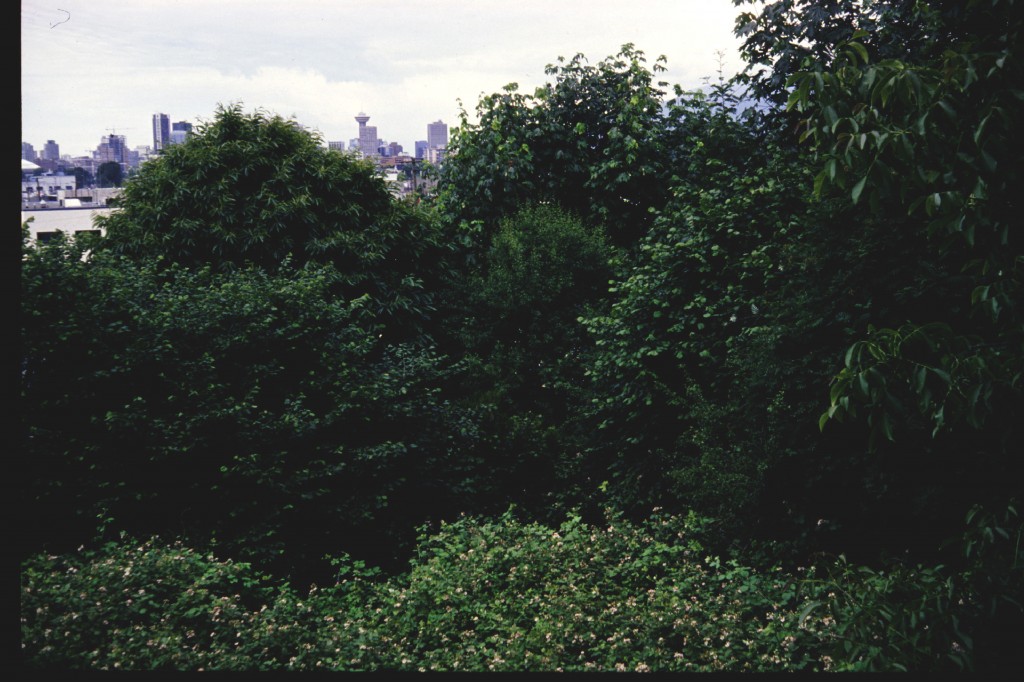
Well developed emergent forest of both native and exotic species (Himalayan Blackberry, English Walnut, Big-leafed Maple, Castanea, Corylus, hops etc.) - East Vancouver (1994)
Such processes of colonization and re-adaptation are important to track as they fall outside canonical notions of ecological restoration, which generally presuppose a return to a ‘native,’ prelapsarian kind of species composition, which is becoming increasingly meaningless in the now overarching context of the Anthropocene. I find these new hybrid realities fascinating and hopeful. It means we can do more than just wring our hands at the decline of nature as we thought we knew it. We might as well face it. There is no going back. Now is a good time to intelligently assess our limits and ask ourselves the Zen question: “What can I not do?” Nature might already be several steps ahead of us.
BTW: If any of you are in Vancouver from June 20th- 24th of this year, I am teaching a little Continuing Ed Course at Emily Carr University entitled: Open Source City: Field Studies. We’ll travel around town on the Skytrain, examining various emergent landscapes and also examples of temporary autonomous zones – places that people have created as urban commons, which exist outside the mainstream models of planning. I promise it will be a lot of fun, so please sign up if you can!


